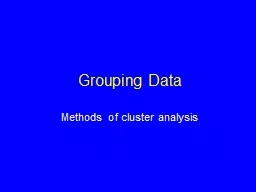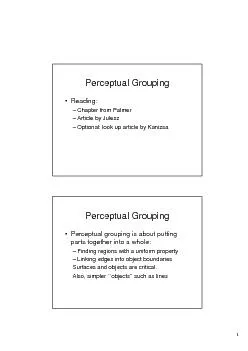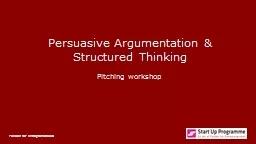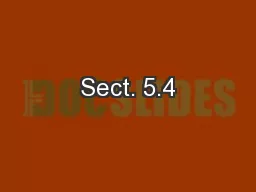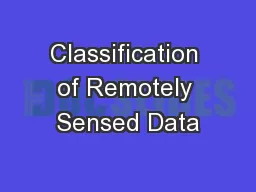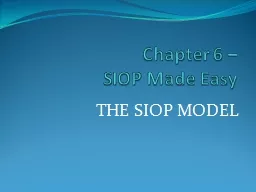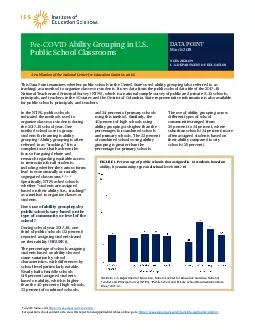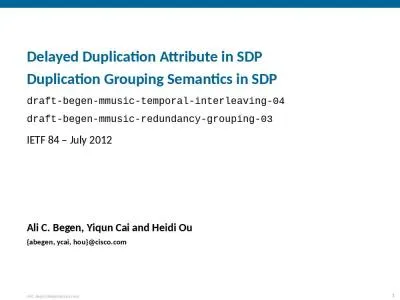PPT-Grouping Data
Author : trish-goza | Published Date : 2015-11-24
Methods of cluster analysis Goals 1 We want to identify groups of similar artifacts or features or sites or graves etc that represent cultural functional or chronological
Presentation Embed Code
Download Presentation
Download Presentation The PPT/PDF document "Grouping Data" is the property of its rightful owner. Permission is granted to download and print the materials on this website for personal, non-commercial use only, and to display it on your personal computer provided you do not modify the materials and that you retain all copyright notices contained in the materials. By downloading content from our website, you accept the terms of this agreement.
Grouping Data: Transcript
Download Rules Of Document
"Grouping Data"The content belongs to its owner. You may download and print it for personal use, without modification, and keep all copyright notices. By downloading, you agree to these terms.
Related Documents

